First established as National Aboriginal History Month in 2009, National Indigenous History Month is a time to honour the history, heritage and diversity of Indigenous peoples in Canada.
It is also a time for all Canadians to learn about, appreciate and acknowledge the contribution Indigenous – First Nations, Inuit and Métis – peoples have made in shaping Canada.
Let’s start with the basics…
There are more than 630 First Nation communities in Canada. This represents 50 Nations and 50 different Indigenous languages. More than 1.3 million people in Canada identify as First Nations, Inuit and/or Métis. The term Indigenous is commonly used as a collective noun to describe First Nations, Inuit and Métis peoples.
First Nation Indigenous peoples are individuals identified from a particular band, reserve-based community, or tribal clan, like the Squamish Nation, Tsleil-Wauthuth Nation and Musqueam Indian Band.
Inuit are the Indigenous people in the Arctic. In Canada, they live mainly in Nunavut, Northwest Territories, northern Quebec and Labrador. In Canada, the Inuit population is more than 65,000.
The Métis are Indigenous peoples in Canada and parts of the United States, who are unique in being of mixed Indigenous and European ancestry. In Canada, they are considered a distinct culture.
Indigenous peoples were living in what is now known as Canada for thousands of years before the first European settlers arrived.
Some local Indigenous history
The area known today as Vancouver, home to University Canada West, is located on the traditional, ancestral and unceded territories of the xʷməθkʷəy̓əm (Musqueam), Sḵwx̱wú7mesh (Squamish) and Sel̓íl̓witulh (Tsleil-Waututh) Nations.
xʷməθkʷəy̓əm (Musqueam)
The Musqueam people have lived on the Fraser River estuary for thousands of years. Vancouver makes up just one portion of Musqueam’s traditional territory, which includes North Vancouver, South Vancouver, Burrard Inlet, New Westminster, Burnaby and Richmond.
They have always moved throughout the territory using the resources it provides for fishing, hunting, trapping and gathering.
Today, Musqueam is a strong, growing community of more than 1,300. Many Musqueam Indian Band members live on a small portion of traditional territory known as the Musqueam Indian Reserve.
Read more about xʷməθkʷəy̓əm history at www.musqueam.bc.ca/our-story.
Sḵwx̱wú7mesh (Squamish)
The Squamish people have lived in the present-day Greater Vancouver area, Gibson’s Landing and Squamish River watershed since before recorded history. It is a complex and rich history, with ancient connections traced within their language through terms for place names and shared ceremony among the Salmon Peoples of the cedar longhouse.
Read more about Sḵwx̱wú7mesh history at www.squamish.net/about-our-nation/.
Sel̓íl̓witulh (Tsleil-Waututh)
Tsleil-Waututh Nation is one of many groups of Coast Salish peoples living throughout British Columbia, Washington State and Oregon.
In BC, their traditional territory includes Burrard Inlet and the waters draining into it. Historically, in winter Tsleil-Waututh people would congregate in large villages located in sheltered bays. In spring, families would disperse and set up camps on beaches and protected coves in Tsleil-Waututh territory. In summer they, and other Coast Salish people would travel to the Fraser River to catch and dry sockeye salmon before moving to the Indian, Capilano, Seymour and other rivers to fish for pink and chum salmon in the fall. By December, the families returned to their winter villages.
Read more about Sel̓íl̓witulh history at twnation.ca/our-story.
National Indigenous Peoples Day
While the entire month of June is National Indigenous History Month in Canada, June 21 is National Indigenous Peoples Day – an official day of celebration to recognize and honour the heritage, cultures and valuable contributions to society by First Nations, Inuit and Métis peoples.
In 1982, the Assembly of First Nations, then known as the National Indian Brotherhood, first suggested establishing a day of recognition. Quebec was the first province to establish June 21 as a day to celebrate Indigenous culture.
The federal government followed suit and on June 21, 1996, Canada celebrated its first National Aboriginal Day (the name was changed to National Indigenous Peoples Day in 2017).
Across Canada, the day is typically marked by ceremonies and celebrations highlighting cultural performances and activities, displays of art and events that honour the contributions of Indigenous people. While the COVID-19 pandemic has changed how National Indigenous Peoples Day is celebrated, there are still many virtual celebrations and online resources available.
Here in Vancouver, Carnegie Community Centre and UBC Learning Exchange are hosting a live online event from noon to 2 pm on Monday, June 21.
The virtual cultural celebration will begin with a welcome from Squamish Chief Bill Willams and feature performances from Carnegie’s lexwst’i:lem drum group, Children of Takaya dancers and more. It will also include a virtual tour of the Bill Reid Gallery of Northwest Coast Art and artist talks with the Museum of Anthropology.
Event details and a link to join are available on the Let’s Celebrate National Indigenous Peoples Day 2021 Facebook page.
Want to learn more about Indigenous history in Canada?
- Canadian Geographic’s Indigenous Peoples Atlas of Canada includes sections on Truth and Reconciliation, the Métis Nation, the Inuit and the First Nations.
- The Assembly of First Nations’ It’s Our Time: The AFN Education Toolkit was designed to bring together First Nations and non-First Nations people and foster a spirit of cooperation, understanding and action.
- The #IndigenousReads campaign encourages reconciliation between Indigenous and non-Indigenous people through sharing literature written by First Nations, Inuit and Métis people.
- The Government of Canada’s website includes information about the history of Indigenous people in Canada.
Published on June 21, 2021.






